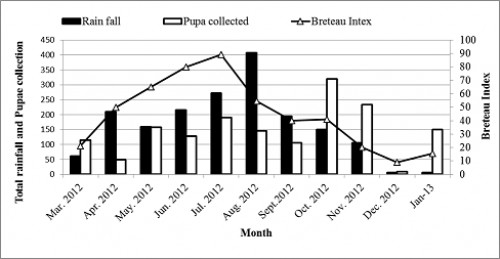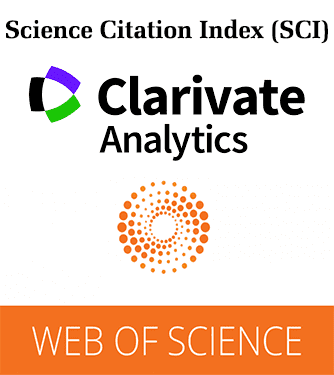Vol. 2, Issue 2, Part A (2015)
Stegomyia indices of Aedes mosquito infestation and container productivity in Alappuzha district Kerala
Author(s): R. Balasubramanian, B. Anukumar and T.L. Nikhil
Abstract: The aim of the present study is to find out the seasonal variation in container productivity and infestation levels by Aedes albopictus skuse and Aedes aegypti Linnaeus in Alappuzha district. In total, 1010 houses and 3770 water-holding containers were inspected during both the dry and wet period surveys, and 1606 pupae were collected and all those immature were identified as Ae. albopictus. The maximum Breteau and Pupae index was found to be 89.22% and 395% during the month of July. The overall indices were higher in the wet than dry season. Discardable containers were important that had the highest prevalence of Ae. albopictus larvae during both the dry and wet periods. Non-discardable containers were important contributors to larval production during the dry period (40%) compared with the wet period (18%). Most of the larval habitats observed in both wet and dry season were small tin and plastic waste containers positive for Ae. albopictus larvae. Non-discardable containers were more important contributors for pupal production during the dry period (60%) whereas discardable containers were important pupae producers during wet period (51%). Large and open shape containers produced 71% of total pupae especially plastic sheet. A total of 2514 (146 pools) mosquitoes were screened for dengue and chikungunya virus by RT-PCR. However, there was no detection of dengue and chikungunya virus genomic RNA. Generally, Ae. aegypti, (L.) is considered as the primary vector for the spread of dengue and chikungunya virus worldwide. However, our present entomological investigations revealed only the presence of Ae. albopictus. So we believe that in Alappuzha district Ae. albopictus is the vector for the disease burden of dengue and chikungunya virus.

Fig.: The relationship of increasing larval population (BI) with rainfall
Pages: 14-18 | 2232 Views 83 Downloads
How to cite this article:
R. Balasubramanian, B. Anukumar, T.L. Nikhil. Stegomyia indices of Aedes mosquito infestation and container productivity in Alappuzha district Kerala. Int J Mosq Res 2015;2(2):14-18.







